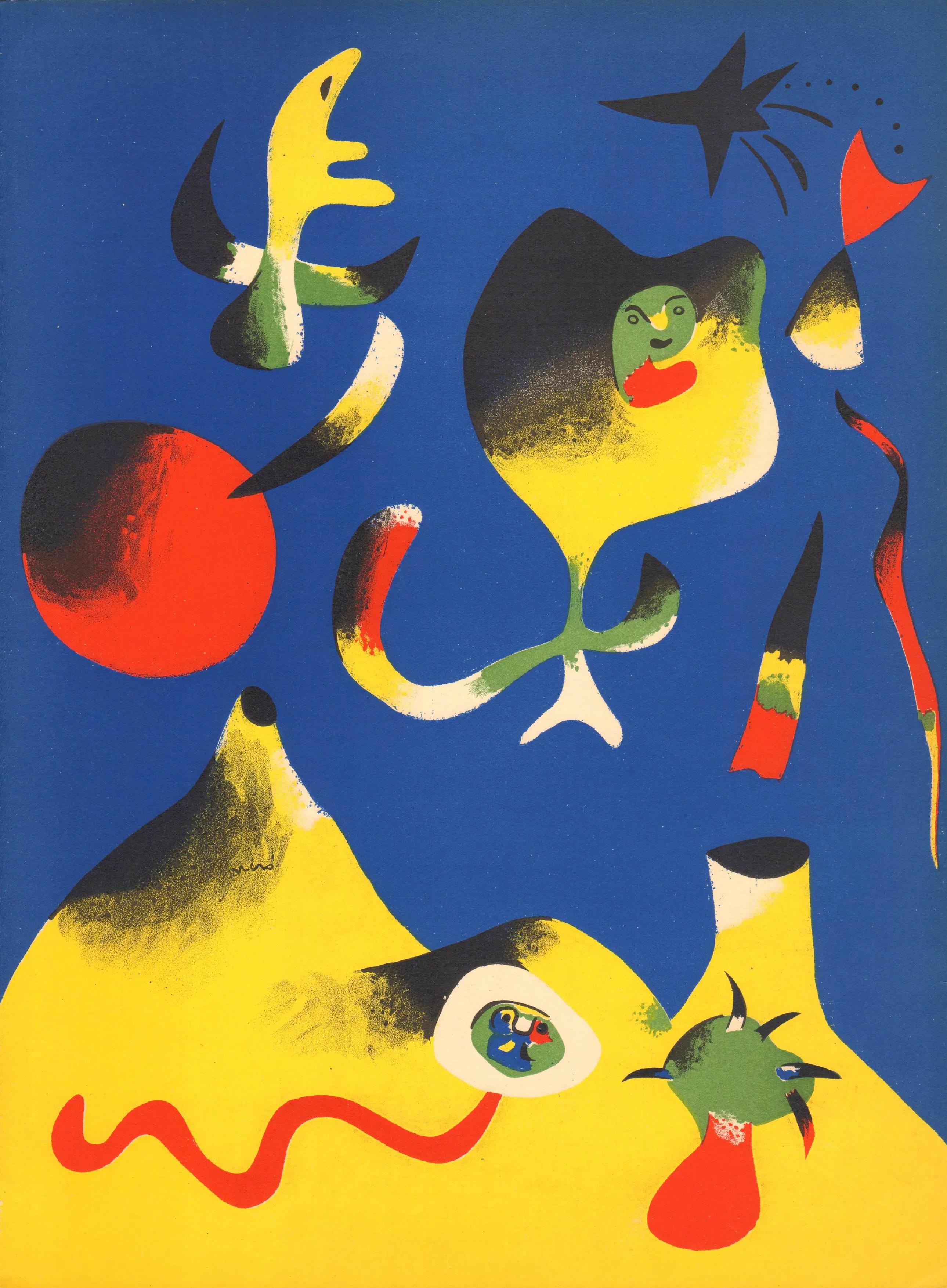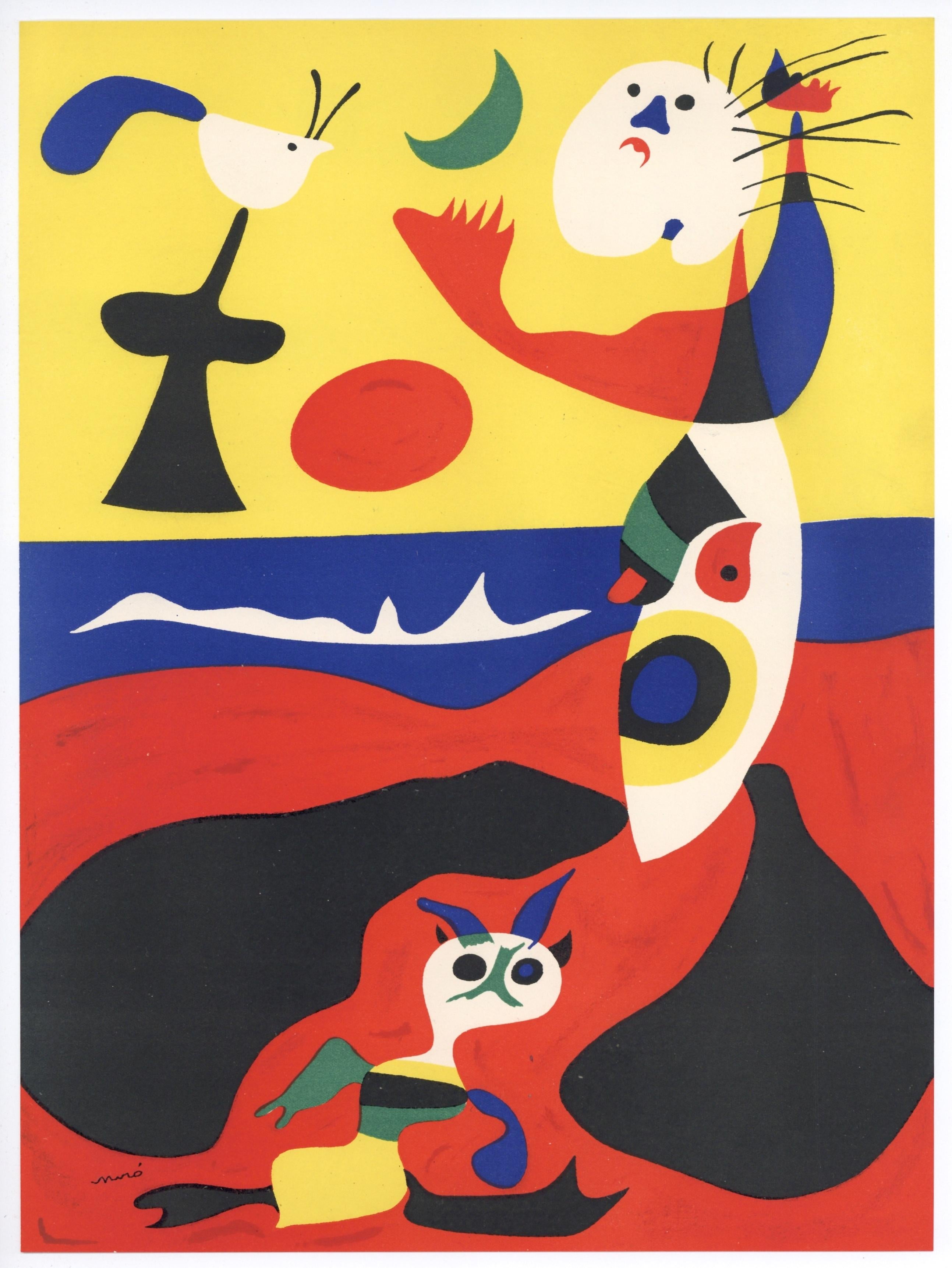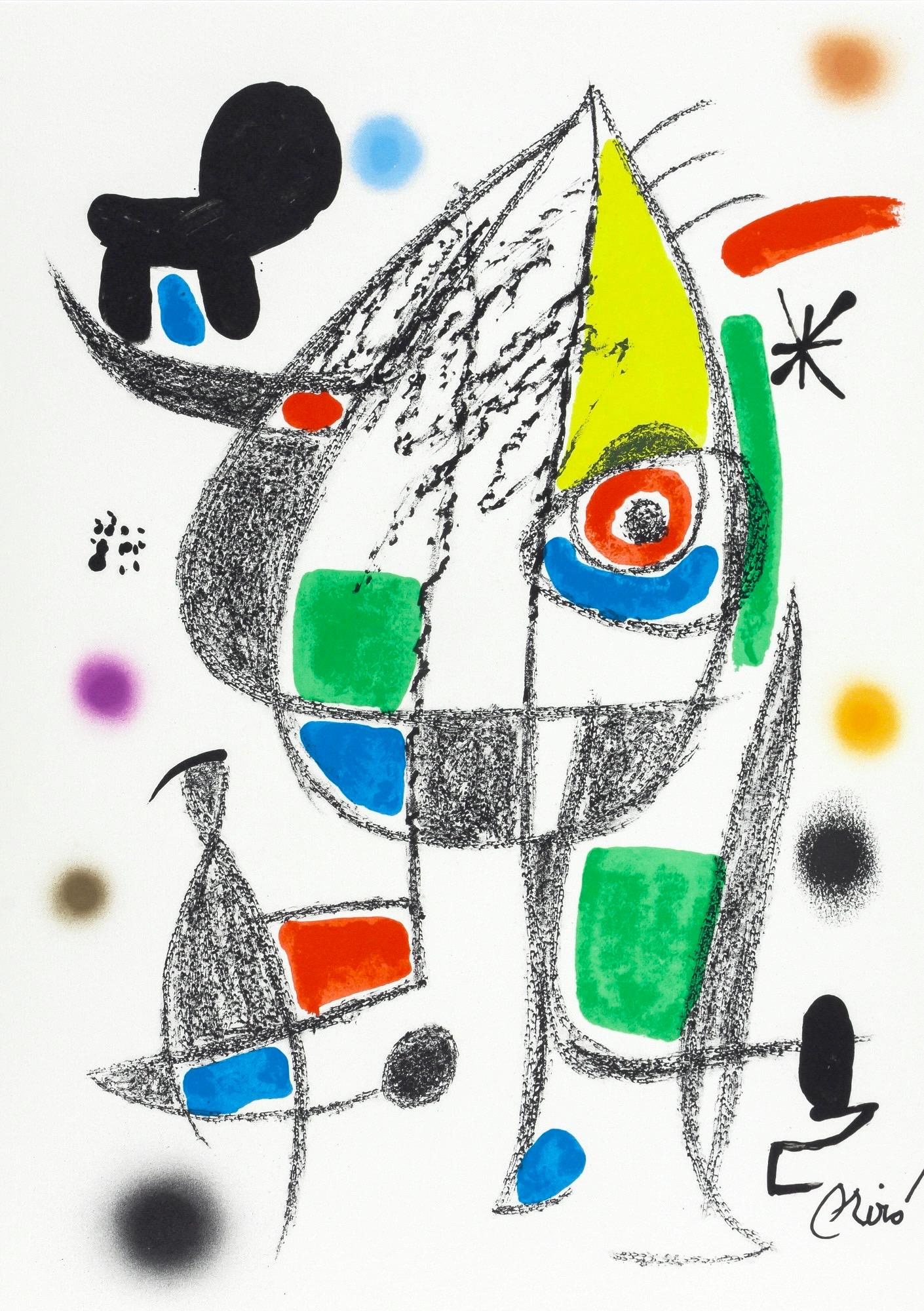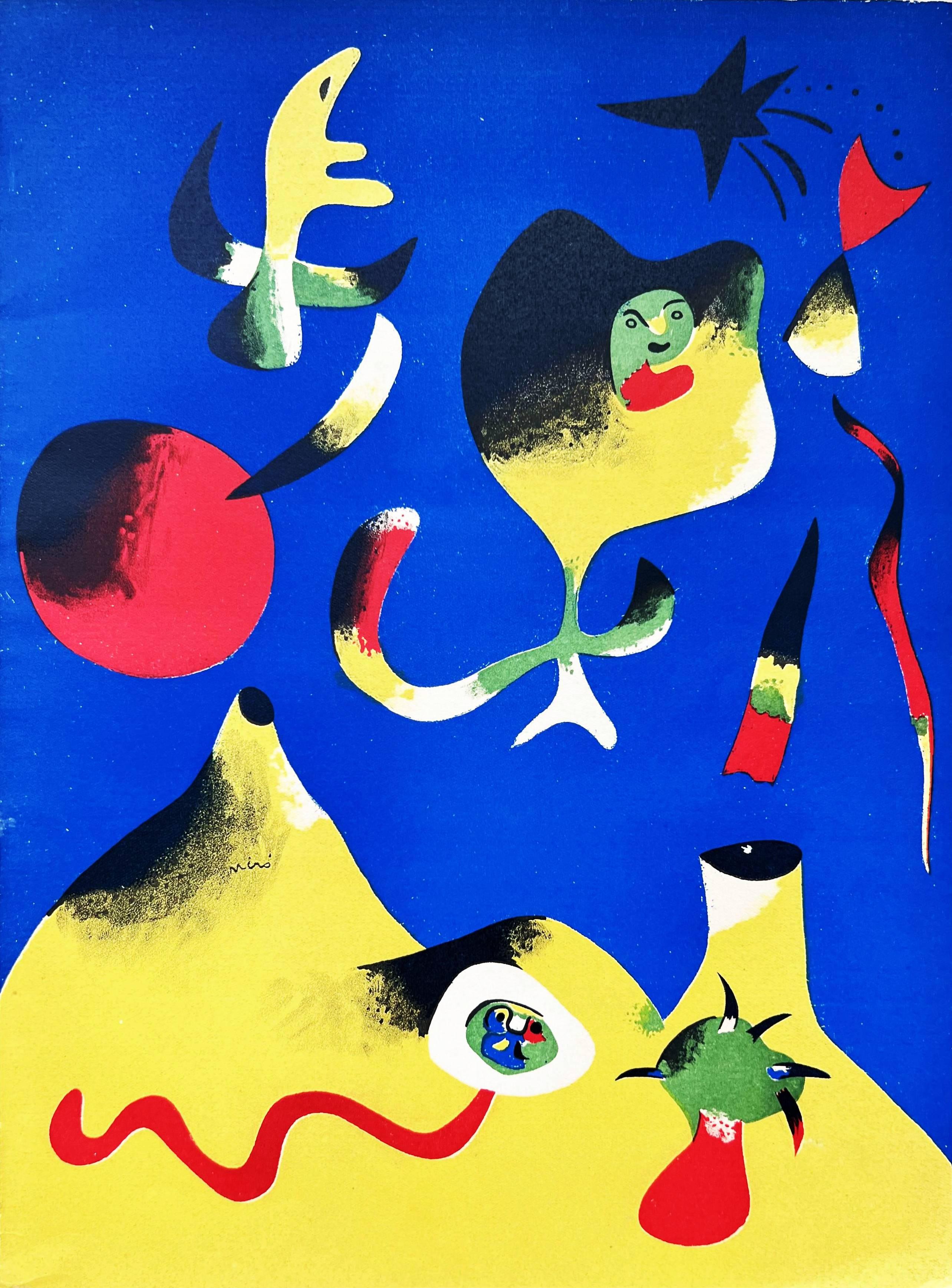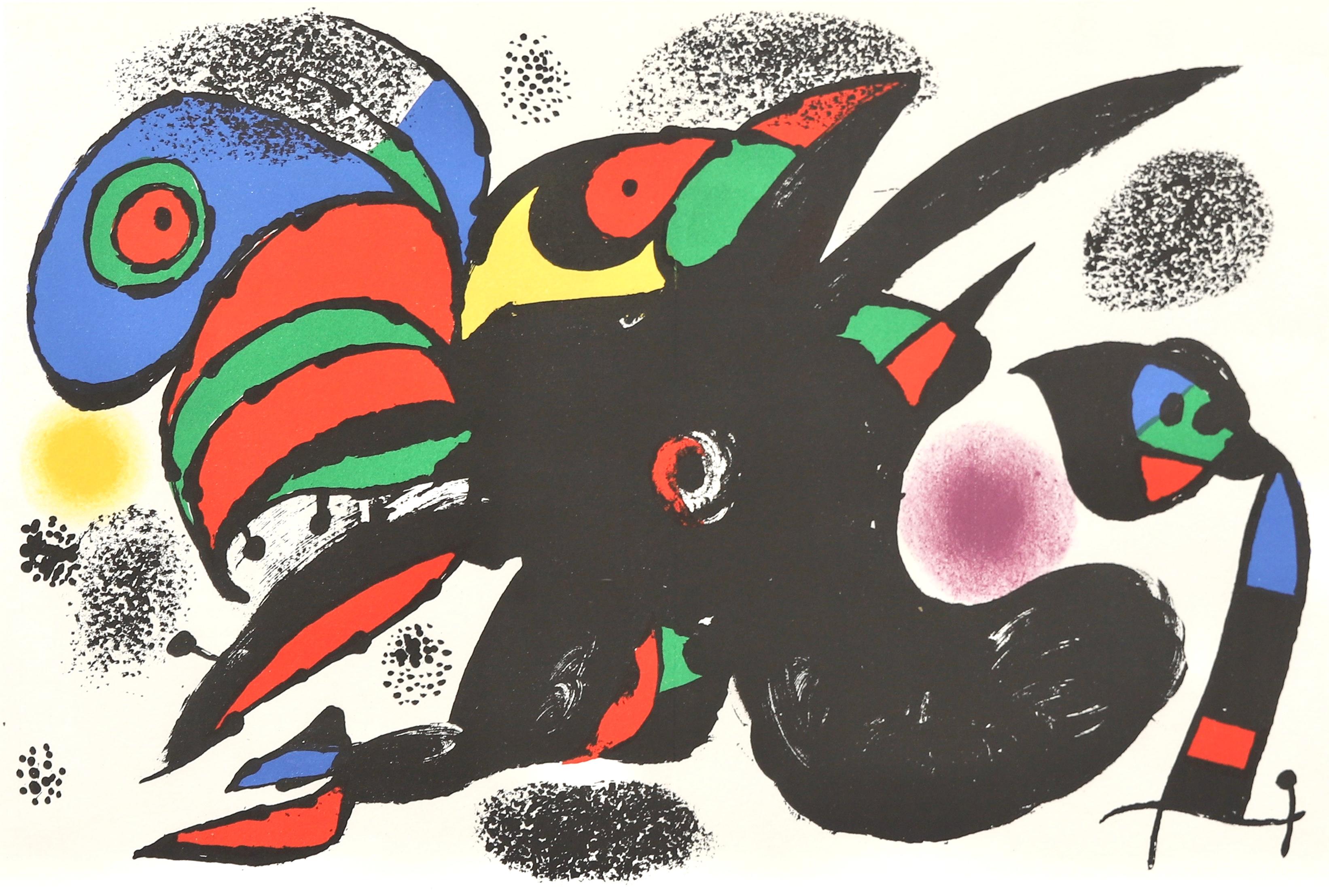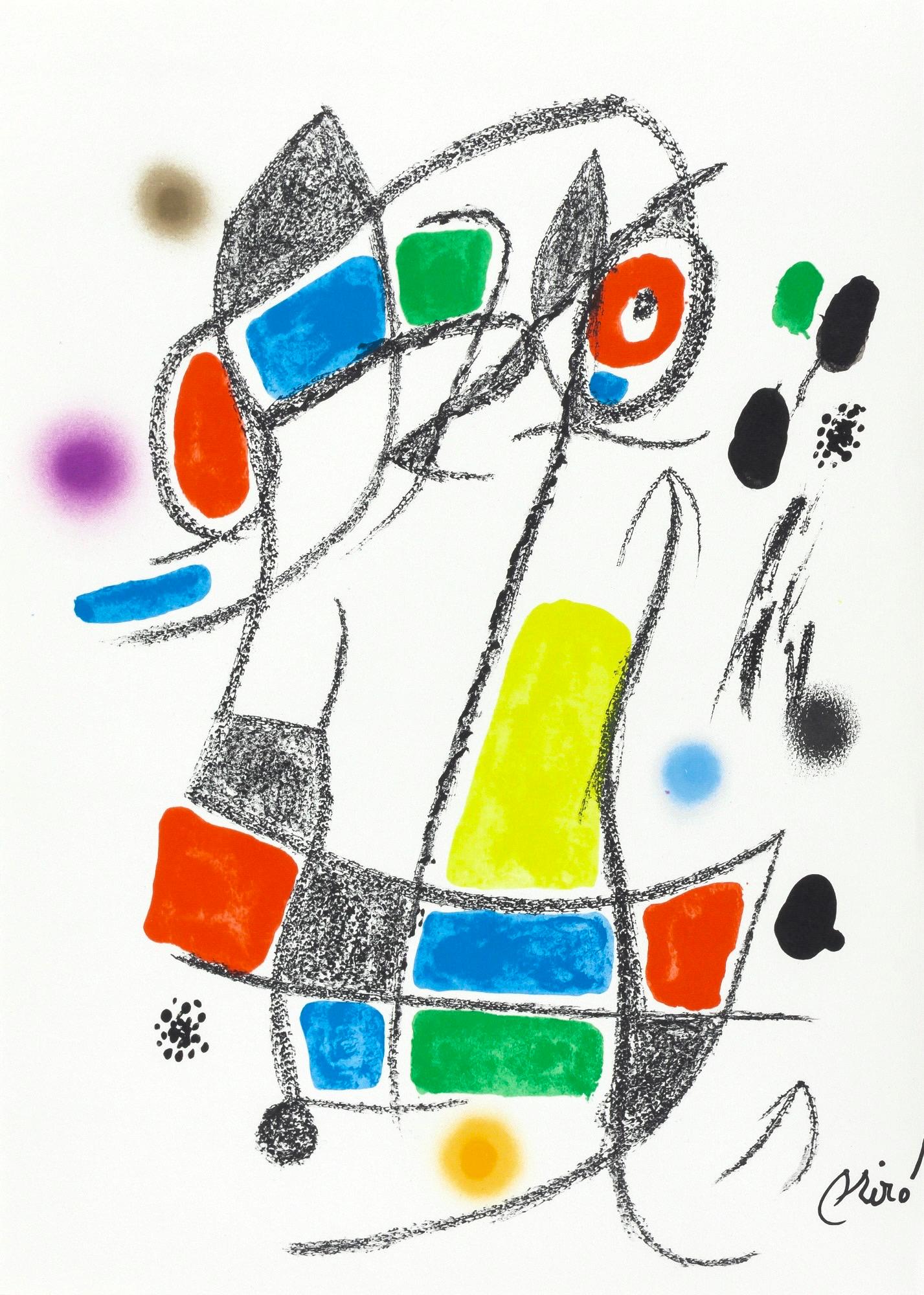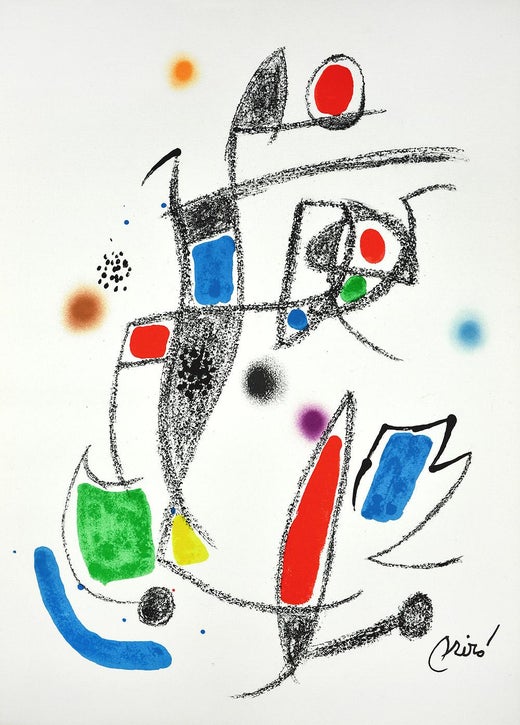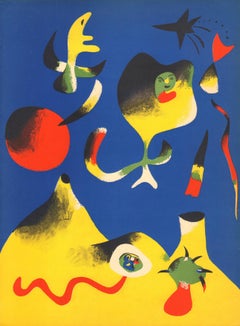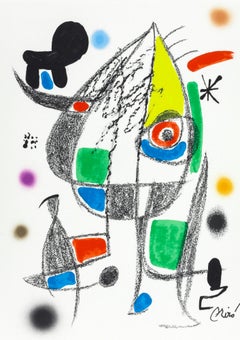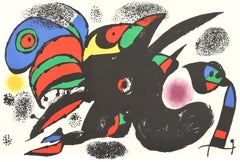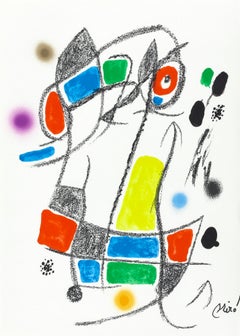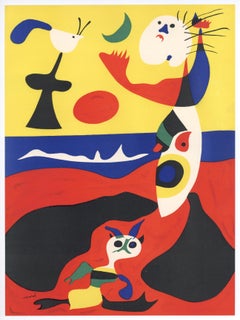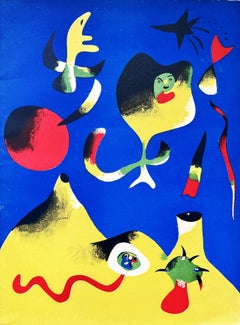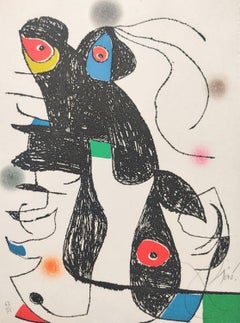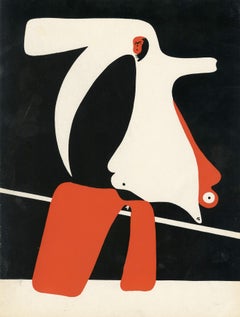This exquisite lithograph by Joan Miro (1893–1983), titled L'air (The Air), from Verve, Revue Artistique et Litteraire, Vol. I, No. 3, originates from the 1938 issue published by Editions de la revue Verve, Paris, under the direction of Teriade, Editeur, Paris, and printed by Mourlot Freres, Paris, 1938. This lyrical and atmospheric composition embodies Miro's fascination with the invisible rhythms of nature and the poetry of movement. L'air captures the ethereal and weightless essence of the natural world through his fluid linework and organic forms, evoking a sense of freedom and transformation. The work reflects Miro's deep belief in the interconnectedness of all living things and his pursuit of an art that transcends material boundaries to reach the spiritual realm. Created during one of the artist's most innovative periods, this piece demonstrates the harmony between abstraction and imagination that defines his unique visual language.
Executed as a lithograph on velin du Marais paper, this work measures 14 x 10.5 inches. Signed in the plate and unnumbered as issued. The edition exemplifies the superb craftsmanship of the Mourlot Freres atelier, renowned for its collaborations with the leading modernists of the 20th century.
Artwork Details:
Artist: Joan Miro (1893–1983)
Title: L'air (The Air), from Verve, Revue Artistique et Litteraire, Vol. I, No. 3, 1938
Medium: Lithograph on velin du Marais paper
Dimensions: 14 x 10.5 inches
Inscription: Signed in the plate and unnumbered as issued
Date: 1938
Publisher: Editions de la revue Verve, Paris, under the direction of Teriade, Editeur, Paris
Printer: Mourlot Freres, Paris
Catalogue raisonne references: Dupin, Jacques, et al. Miro Graveur. D. Lelong, 1984, illustration 1310. Miro, Joan, et al. Joan Miro: Lithographs. Leon Amiel, 1972, illustration 6.
Condition: Well preserved, consistent with age and medium
Provenance: From Verve, Revue Artistique et Litteraire, Vol. I, No. 3, published by Editions de la revue Verve, Paris, 1938
About the Publication:
Verve, Revue Artistique et Litteraire was one of the most influential art periodicals of the 20th century, founded in Paris in 1937 by the visionary Greek-born publisher Teriade (Stratis Eleftheriades). Conceived as a synthesis of art and literature, Verve brought together the greatest modern artists and writers of its time—Henri Matisse, Pablo Picasso, Marc Chagall, Georges Braque, Joan Miro, Fernand Leger, and others—alongside poets and philosophers such as Paul Eluard, Albert Camus, and Jean-Paul Sartre. Each issue was a work of art in itself, luxuriously printed by master lithographers such as Mourlot Freres and produced in collaboration with leading typographers and designers. Verve became a platform for avant-garde creativity, publishing original lithographs and essays that reflected the evolving spirit of modernism. Matisse collaborated closely with Teriade from the magazine's inception, producing some of its most iconic issues, including those devoted to his paper cut-outs. The final Verve issue of 1958, which featured La Tristesse du Roi and the Nu Bleu series, stands as a testament to Matisse's enduring genius and to the publication's legacy as the definitive meeting of art, poetry, and printing craftsmanship in 20th-century France.
About the Artist:
Joan Miro (1893–1983) was a Catalan painter, sculptor, printmaker, and ceramicist whose visionary imagination and lyrical abstraction made him one of the most influential and beloved artists of the 20th century. Born in Barcelona, Miro drew inspiration from Catalan folk art, Romanesque frescoes, and the luminous landscapes of Mont-roig del Camp, developing a deep connection to nature that infused his work with vitality and symbolism. After formal training at the Escola d'Art in Barcelona, he absorbed the lessons of Post-Impressionism and Cubism before moving to Paris in the early 1920s, where he became a leading figure in the Surrealist movement. There, Miro forged a personal visual language of biomorphic shapes, floating symbols, and radiant color harmonies that reflected both spontaneity and spiritual depth. In creative dialogue with peers such as Alexander Calder, Alberto Giacometti, Salvador Dali, Wassily Kandinsky, Marcel Duchamp, and Man Ray, he helped revolutionize modern art by dissolving the boundaries between abstraction and dream imagery. Miro's inventive approach extended far beyond painting, embracing sculpture, ceramics, and monumental public commissions that redefined how art could interact with space and emotion. His expressive freedom and gestural abstraction profoundly influenced later artists including Jackson Pollock, Mark Rothko, Alexander Calder, Jean Dubuffet, Antoni Tapies, and Joan Mitchell, inspiring generations who sought to merge instinct, color, and imagination. Today, Miro's work remains a cornerstone of modernism, prized by collectors and celebrated in major museums worldwide. His highest auction record was achieved by Peinture (Etoile Bleue) (1927), which sold for £23,561,250 (approximately $37 million) at Sotheby's, London, on June 19, 2012.
Joan Miro L'air, Miro Verve, Miro Mourlot Freres, Miro Teriade, Miro 1938 lithograph, Miro velin du Marais, Miro Revue Artistique et Litteraire, Miro collectible print, Miro modernist lithograph.
